Japanese Screen Conservation Project is Complete!
Cherry Blossoms, a byōbu, or Japanese folding screen, has hung in the Liljestrand dining room since 1978, exactly where Vladimir Ossipoff specified. It was in urgent need of restoration and remounting due to bug damage, sun damage, and poorly completed repairs over the years. After a successful fundraising campaign in 2023, we sent the dining room screen and a second screen, from the library, Procession, to Mark Dushkes of Aaron Studios in Bend, Oregon, for conservation. Procession was one of the original pieces of art that Ossipoff approved for purchase and placement in the house in the 1950s soon after the house was finished. It first hung in the dining room but was relocated to the library to make way for Cherry Blossoms. Both screens were painted 300 to 400 years ago during the Edo Period.
It was not an easy project with a straightforward path. Masterpiece International sent a team to construct a crate and deinstall both screens for shipping to Oregon. Once the screens were taken off the walls, the amount of bug damage and paper damage became more apparent. Upon receipt of the screens in Oregon, Mr. Dushkes realized that the screens were in far worse condition than the photos he had previously seen indicated.
He immediately removed the paintings from the screen frames to ensure live bugs did not cause an infestation in his shop. Closer inspection of the four Procession panels revealed extreme deterioration of the paint pigments. Had Mr. Dushkes gone any further with conservation measures on Procession, the pigments would have turned to powder. Thus, no work was performed, and the panels were left as-is. Once returned to Liljestrand House, we worked with Kalani Kea at Pictures Plus to mount and frame the panels as individual paintings. In place of glass, we used Optium Museum Acrylic to prevent as much glare as possible and to provide UV protection.
Cherry Blossoms presented its own challenges. Many poorly executed repairs had been performed over the years, some with a super glue type material. There were large tears, holes and missing paint and gold leaf. Mr. Dushkes soaked the paintings in water, as is customary when remounting byōbu. After soaking the paintings and removing as much of the old glue as possible, Mr. Dushkes realized that the paper would not hold up to the stretching and mounting necessary to attach them to new wooden screen frames. The paintings were too old and fragile. Thus, he mounted each painting on acid free paper and sent them back to Liljestrand House with the Procession panels. We took the panels to Diane Ko of Art Source & Designs to be framed in thin matte-black frames with Optium Museum Acrylic.
Both sets of paintings were finally hung in their rightful places by art installers Roland Longstreet and Lawrence Seward. The six panels that comprise Cherry Blossoms are smaller than the original screen and there is still some work to be done on the dining room wall due to the wall color fading around the original screen over the years. The redwood wall work will be completed in the near future by painter and craftsman Peter Martin.
Staff and board leadership held countless conversations at every juncture of the project. A number of Japanese screen experts were consulted with. We repeatedly asked ourselves the question – is it worth it to try to save the original pieces if they cannot be conserved in their original form, as byōbu? Should we attempt to source byōbu that are similar in size and theme to replace the originals? In the end, the fact that Ossipoff selected the screens specifically for their locations, along with the Liljestrand family’s love for and admiration of the screens throughout their lives informed the decision to save them as well as we could. Even though they are no longer byōbu, and the images are behind glass, the paintings are still beautiful works of art, worthy of display in their respective rooms.
Thank you to all of the Friends of Liljestrand who supported this project so generously. A very special thank you to Richard Kennedy and Steven Prieto who made the lead gift. And mahalo to all of the people we worked with to successfully complete the project.



























